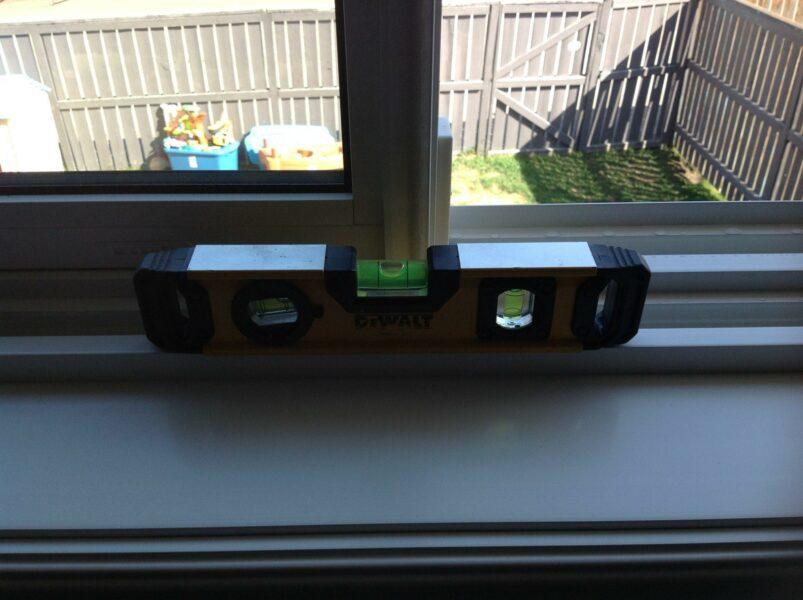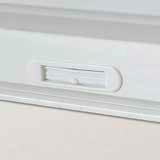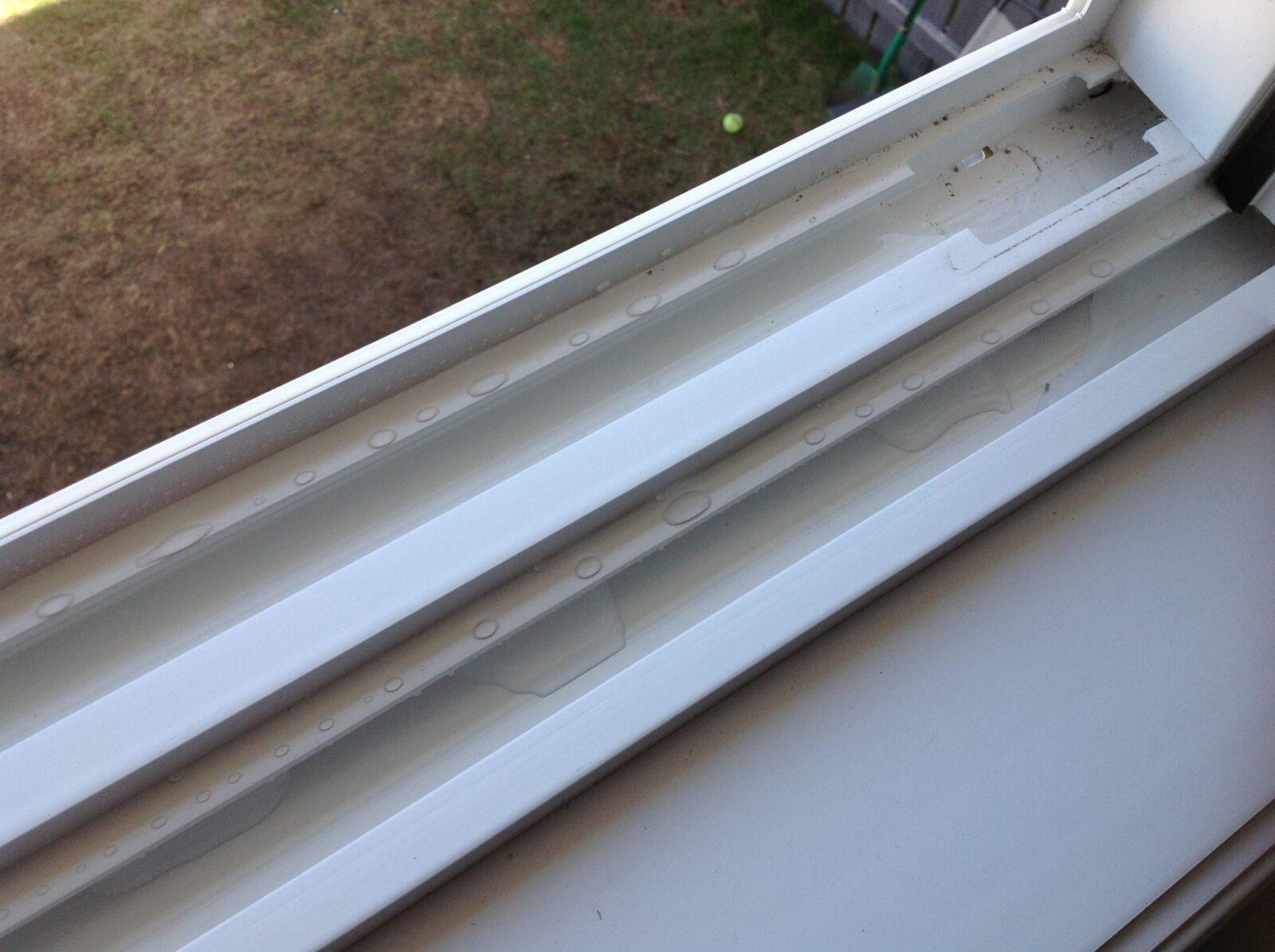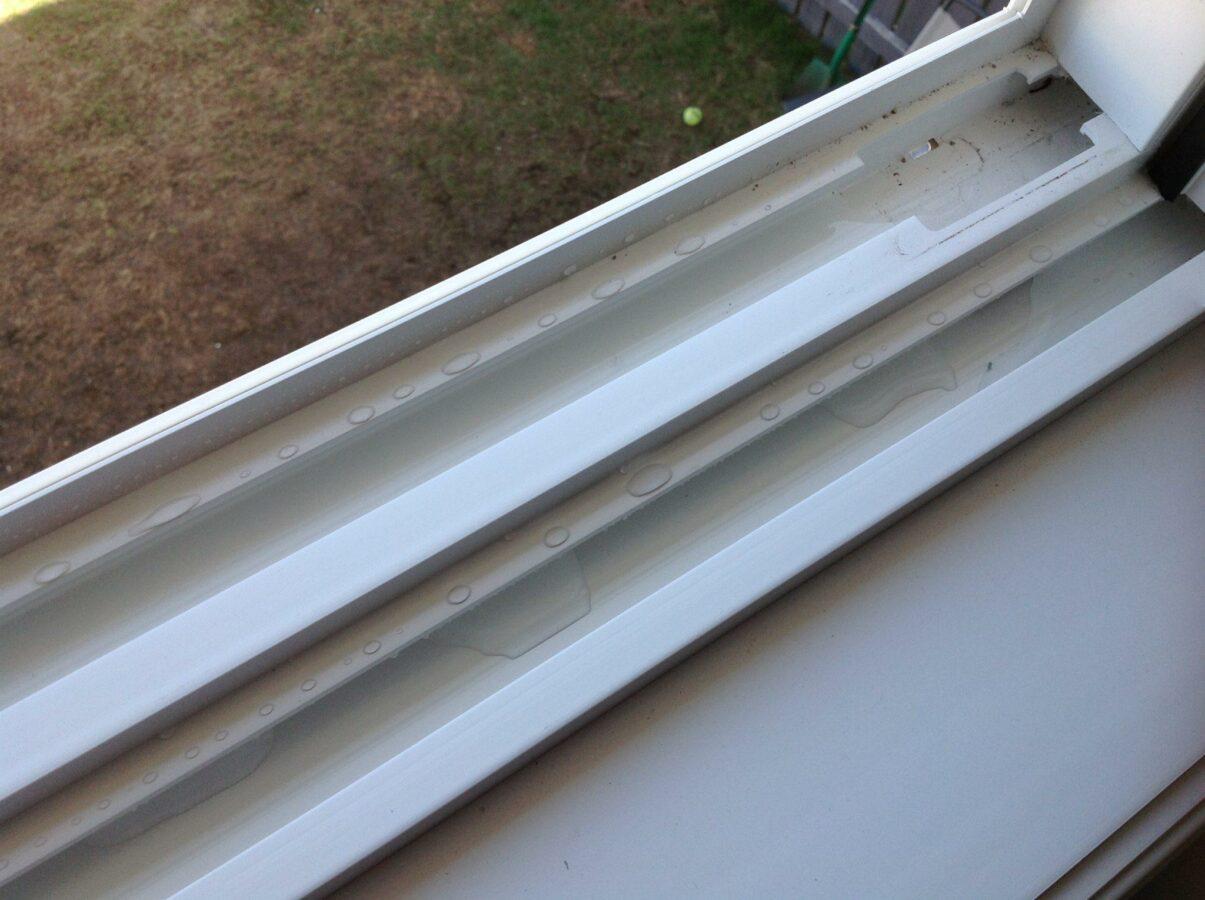A great feature in modern sliding windows is the inclusion of drainage channels. By nature of their design sliding windows have deeper grooves for sashes to move in. Rain or melting snow ends up in these grooves, or worse in your house. Drainage channels allow for this water to run off outside through the window.
One of the common window service problems we hear about from our customers is that there is standing water in their sliding windows.
This can happen for several reasons:
- The window was not installed plumb and level.
- There is a defect in the window.
- The drainage channels are clogged with debris or foliage. (This one is not common with newly installed windows).
There are several ways to resolve this problem, and ensure proper operation of drainage channels.
Because these issues are most commonly associated with how the window was installed, the service installer removes the casings around the window and ensures the shimming was done properly around the whole frame. If the window is not shimmed correctly it may not be quite level or square. In a level window the water drains out with gravity. An uneven one may hold water on one side of the wall, or away from the drainage hole.

Window defects are more difficult to recognize. Errors in the manufacturing process can affect the location of the drainage opening, how level the window is, or how sloped the drainage channels are. If a service installer deems the problem to be a result of a manufacturing defect your windows can be reordered and are covered by warranty.
Although the slider technology utilizes drainage flaps to prevent debris, insects or dirt from clogging the channel, gunk can still accumulate in the channel over time. When this is the case, the installer usually removes the drainage flaps and physically tries to flush out the debris that is causing the blockage. New drainage flaps are then put into the channel to prevent further blockages.

It is important to remember that even the best drainage channels don’t get rid of all the water. Obviously it isn’t right if the water level is higher than a couple of millimeters, or if it’s still there and hasn’t drained after several days. But a little bit of water on the bottom of the groove is not a cause for panic, and should evaporate naturally.
Remember, if you are experiencing these problems with your new windows the company responsible for the installation should be able to service them and address your concerns. Too often companies tried to blame drainage issues on windows that haven’t been closed properly, or even severe weather. Even if that ends up being the case, a good company should generally still send someone to inspect the problem and verify what is causing the water to stay in the groove instead of draining away.


